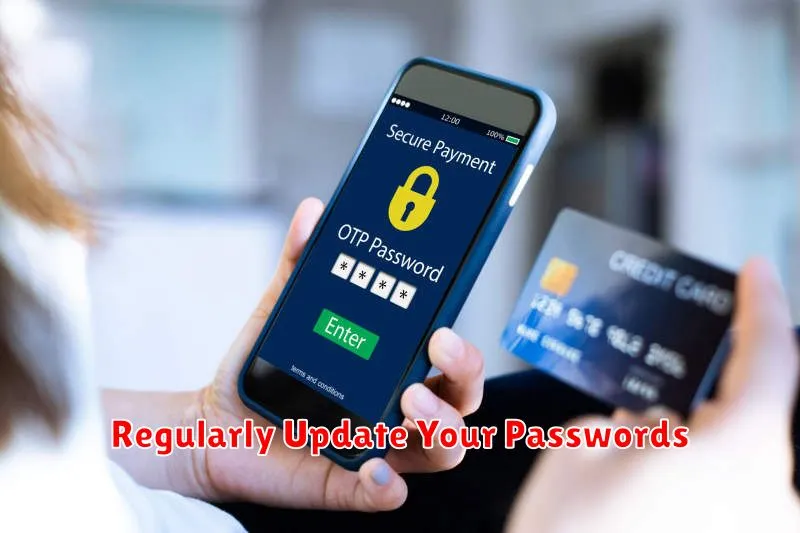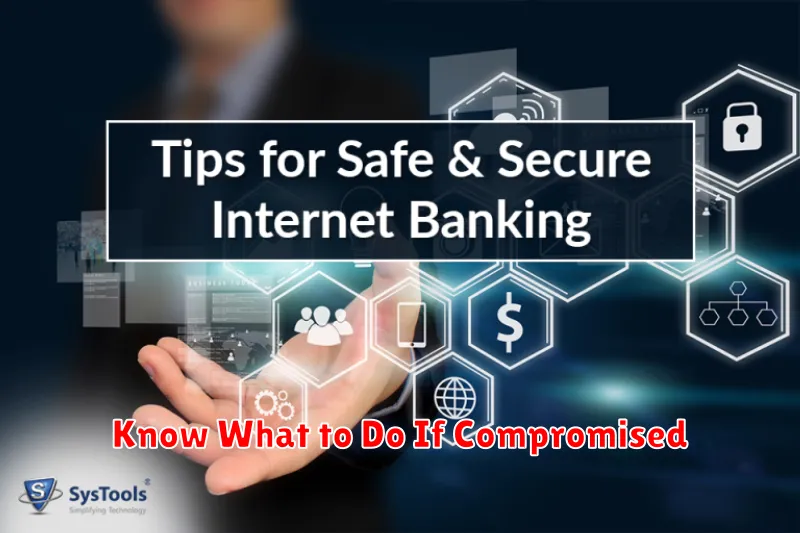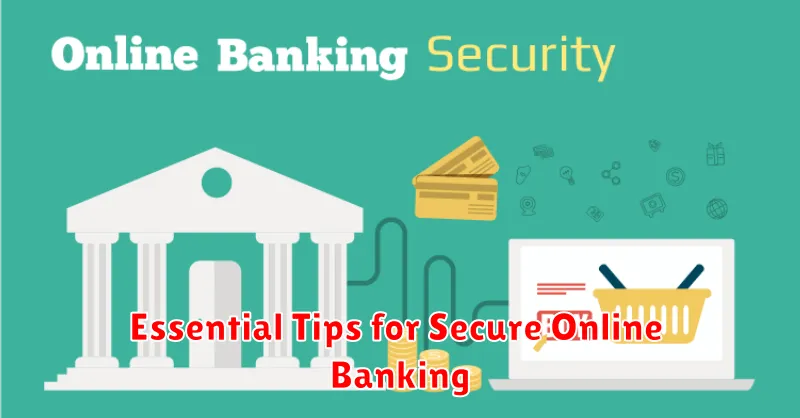In today’s digital age, online banking has become an indispensable tool for managing finances. However, the convenience of online banking comes with inherent risks. Protecting your sensitive financial information is paramount. This article provides essential tips for secure online banking practices, helping you navigate the digital financial landscape safely and confidently. Understanding the potential threats and implementing these security measures will significantly reduce your vulnerability to fraud and identity theft. From creating strong passwords to recognizing phishing scams, we’ll cover the crucial steps for ensuring a secure online banking experience.
Secure online banking requires vigilance and a proactive approach to security. By following these essential tips, you can fortify your defenses against cybercriminals and protect your hard-earned money. This guide will equip you with the knowledge and tools to identify potential threats and implement effective security measures, empowering you to take control of your online banking security. We’ll delve into the specifics of multi-factor authentication, the importance of regularly updating software, and how to recognize and avoid online banking scams. Your financial peace of mind depends on it.
Create Complex and Unique Passwords
Strong passwords are the first line of defense against unauthorized access. Avoid easily guessed passwords like birthdays or pet names. Instead, create passwords that are complex and unique.
A strong password should be:
- Lengthy: Aim for at least 12 characters.
- Complex: Include a mix of uppercase and lowercase letters, numbers, and symbols.
- Unique: Don’t reuse the same password across multiple accounts.
Consider using a password manager. These tools generate and securely store complex passwords, eliminating the need to memorize them.
Enable Two-Factor Authentication
Two-factor authentication (2FA) adds an extra layer of security to your online banking account. It requires not only your password but also a second factor, typically a code generated by an app on your smartphone or sent to your mobile device via text message. This means even if someone steals your password, they cannot access your account without also having that second factor.
Enabling 2FA is crucial. It significantly reduces the risk of unauthorized access, protecting your financial information from cybercriminals. Most banks offer 2FA, often referred to as “multi-factor authentication.” Check your bank’s security settings to activate it.
Regularly Update Your Passwords

Regularly updating your online banking passwords is a critical security practice. It significantly reduces the risk of unauthorized access, even if your credentials have been previously compromised. Aim to update your passwords every 30 to 90 days.
Choose strong and unique passwords. Avoid easily guessable information like birthdays or pet names. Instead, opt for a combination of uppercase and lowercase letters, numbers, and symbols. Consider using a password manager to securely store and generate complex passwords.
Monitor Your Accounts Frequently
Regularly reviewing your account activity is a critical aspect of online banking security. This allows you to quickly identify any unauthorized transactions or suspicious activity.
Make it a habit to check your account balance and transactions at least once a week, if not more frequently. Set up account alerts to receive notifications of important changes, such as large withdrawals or password changes.
Being vigilant will help you minimize potential losses and maintain control over your finances.
Avoid Using Public Wi-Fi
Public Wi-Fi hotspots, while convenient, pose a significant security risk for online banking. These networks often lack adequate encryption, making your data vulnerable to interception by cybercriminals. Hackers can potentially gain access to your login credentials, account numbers, and other sensitive information.
It is strongly recommended to conduct online banking activities only on a secure, private network, such as your home Wi-Fi or a cellular data connection. If you must use public Wi-Fi, consider using a virtual private network (VPN). A VPN encrypts your internet traffic, adding an extra layer of security.
Recognize Phishing Attempts
Phishing attacks are designed to trick you into revealing sensitive information, such as your online banking credentials. Be vigilant and learn to identify common phishing tactics.
Suspicious Emails and Texts: Be wary of unsolicited emails or text messages requesting personal or financial information. Look for poor grammar, misspellings, and generic greetings. Legitimate institutions rarely request sensitive information via these channels.
Fake Websites: Phishing websites often mimic legitimate banking sites. Carefully examine the URL for discrepancies. Look for slight variations in spelling or unusual domain extensions. Always access your online banking platform directly rather than clicking links in emails or texts.
Secure Your Devices
Securing your devices is paramount for safe online banking. Always keep your operating system and software updated to patch security vulnerabilities. Install a reputable antivirus and anti-malware program and ensure it’s actively scanning. Consider using a firewall to add an extra layer of protection.
Be mindful of where you use online banking. Avoid using public Wi-Fi as it can be easily compromised. If you must use public Wi-Fi, consider using a virtual private network (VPN) to encrypt your connection. Regularly change your passwords for all your devices and online accounts, and make them strong and unique.
Install Trusted Antivirus Software
Protecting your financial information starts with securing your device. Installing reliable antivirus software is a crucial first step. Antivirus software acts as a digital shield, scanning for and removing malicious programs like viruses, spyware, and Trojans that could compromise your online banking credentials.
Choose antivirus software from a reputable vendor. Ensure the software is up-to-date to defend against the latest threats. Regularly scan your system for vulnerabilities, and enable real-time protection to continuously monitor for suspicious activity.
Manage Your Privacy Settings
Protecting your financial information requires diligent management of your online privacy settings. Regularly review and update these settings across all your devices and platforms.
Within your online banking platform, explore privacy controls related to transaction history, account visibility, and marketing communications. Limit the sharing of personal data unless absolutely necessary for account functionality.
On social media platforms, be mindful of the information you share publicly. Avoid posting details that could be used to answer security questions or identify your banking institution. Adjust your privacy settings to restrict access to your profile and posts.
Regularly review the privacy settings on your computer and mobile devices. Ensure strong passwords are used and enable two-factor authentication whenever possible. Keep your software updated to patch security vulnerabilities.
Know What to Do If Compromised

Discovering your online banking account has been compromised can be distressing, but swift action is crucial. Immediately contact your bank to report the incident and freeze your account. This prevents further unauthorized transactions.
Change your online banking password to a strong, unique one that you don’t use for any other accounts. Review your recent transactions thoroughly for any unauthorized activity and report them to your bank.
Consider filing a police report and contacting credit reporting agencies to monitor your credit reports for any suspicious activity. Taking these steps quickly can help mitigate the damage and protect your finances.

